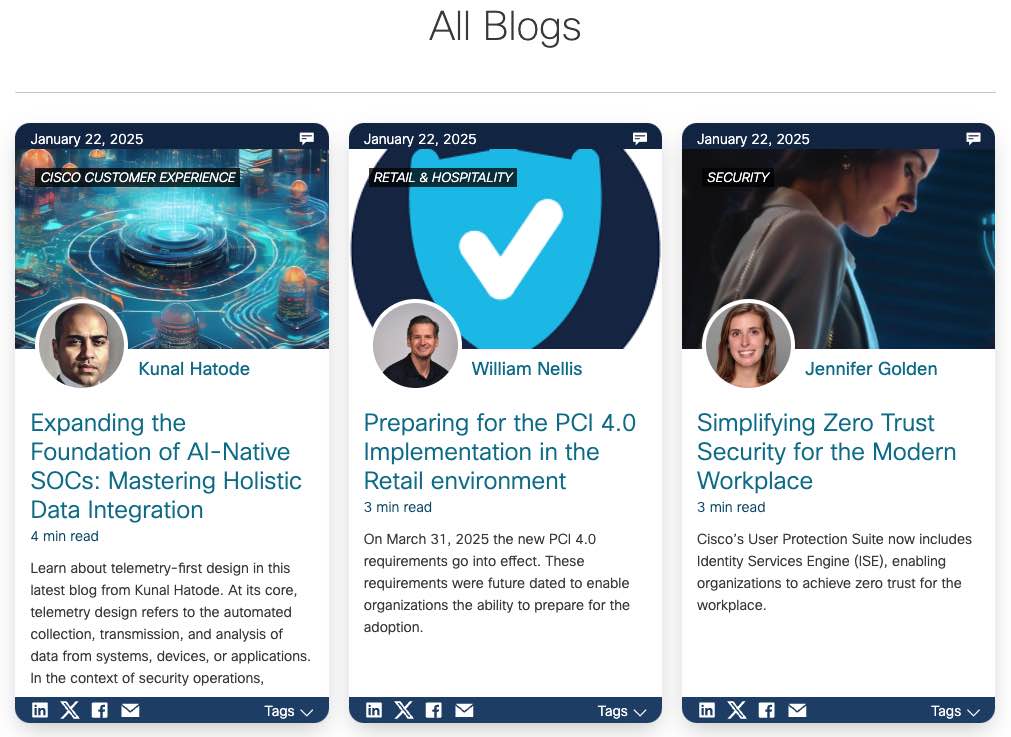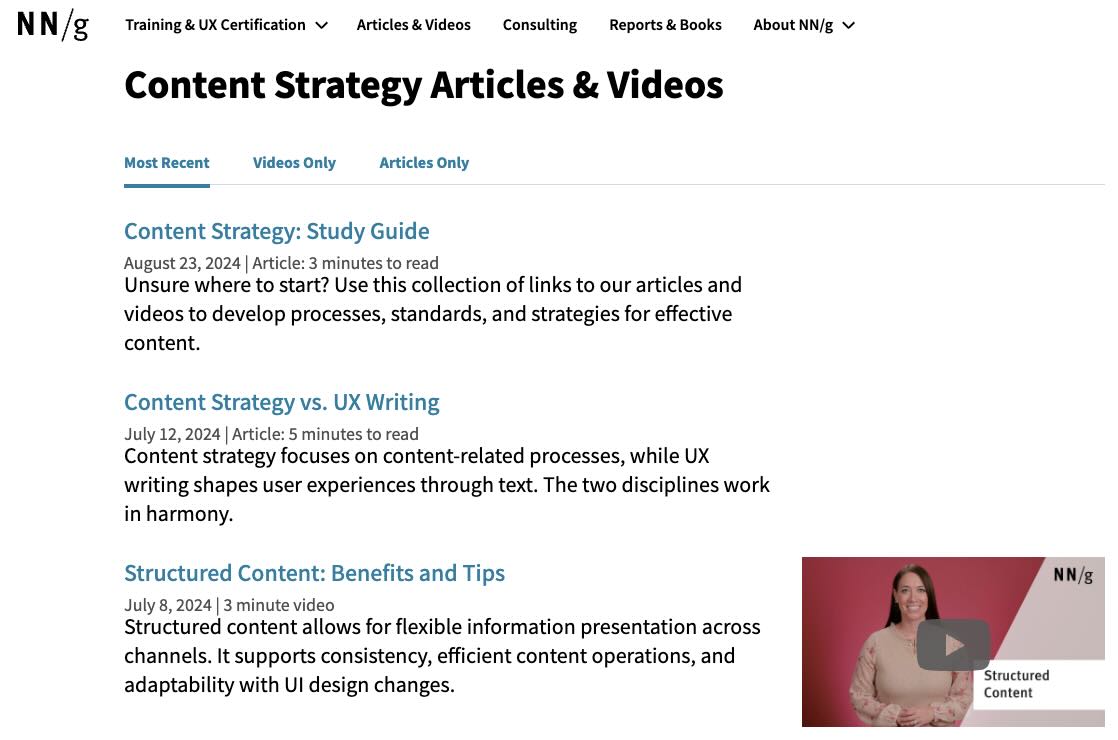Thought leadership plays a critical role in content marketing, and blogs and articles are two great ways to serve it up. But what are the differences between these two formats? And when should you choose one over the other?
Blogs vs Articles: What’s the Difference?
Though blog posts and articles are sometimes used interchangeably, they can have distinct differences in style, purpose, and point of view. That said, the lines between the two are increasingly blurred. Savvy writers borrow best practices from both mediums to help their content stand out.
For example, blogs—which got their start years ago most commonly as an opinion piece or informal content—are now much more research- and fact-based. Meanwhile, articles have adapted from their text-heavy, print-only origins to accommodate web-based user reading patterns. This includes structuring the most crucial data based on where readers are more likely to view content, and using bullets and headings to increase scannability.
Here’s a quick look at blogs vs. articles and how they differ. Keep in mind that these are general differences, not absolutes, and there is much overlap. After all, a piece of content must get optimized for search engines, whether it’s a blog or an article. And their length depends on whether the content you create succeeds in satisfying a user’s search query. In other words, your focus should center on producing content that is high quality, relevant, and valuable to your target audience.
Comparing B2B Blog Posts and Articles
| ATTRIBUTE | BLOG POST | ARTICLE |
|---|---|---|
| Length | User (needs) and topic dependent—can range from 300 to 1,200+ words | User (needs) and topic dependent—can range from 500 to 2,000+ words |
| Tone | More informal, conversational | More formal, authoritative |
| Writing approach | Research-based as well as opinion-based and personal | Journalistic, research-based with facts, statistics, and quotes |
| Author | Company staff or executive, industry expert | Journalist, staff writer, or company guest contributor |
| Content | How-tos, FAQs, company announcements, industry trends, executive thought leadership, case studies | News, industry trends and research, interviews, how-tos, in-depth feature stories |
| Point of view | More likely to be first-person or company-centric | More likely to be third-person; unbiased, independent point of view |
| Medium | Digital, company website | Print and digital, media outlet |
| Copy format | Shorter, scannable paragraphs and sentences | Longer, denser paragraphs; mix of short and long sentences |
| SEO optimization | Necessary | Necessary for digital, not for print |
| Frequency of publication | More often (lower level of effort) | Less often (higher level of effort) |
Blogs vs Articles: Which Is Easier to Write?
Blog posts are arguably easier to write than articles, for the following reasons:
- Perspective and tone. Blog posts are often more casual in tone and provide an up-close lens of someone else’s perspective. First-person point-of-view writing may come easier to some authors.
- Research and effort. Articles strive to provide an unbiased overview of a topic, with detailed supporting information. To achieve this, article writers thoroughly research their topic and interview experts to substantiate their claims, following journalistic best practices. Blog posts may not require as much substantiation.
- Process and time. Blog posts are written by company in-house staff, who control their own editorial calendar and approval processes. If someone in your company wants to have their article published by a third-party media outlet, they will first need to pitch the idea to that outlet’s editors. Then, the media outlet’s staff or a guest contributor from your company can write the article. Either way, the process can involve more people and take more time.
Blogs vs Articles: When Should You Choose One or the Other?
Blog posts and articles are both valuable in a B2B setting. With a longer buying cycle than that of B2C buyers, B2B buyers take their time researching brands and evaluating their options. They’ll need to trust your brand before making a purchase decision. Blog posts and articles can help you build and nurture that trust.
When evaluating whether to write a blog vs. article, remember that one format isn’t necessarily better than another. Both are staples of an owned, earned, and paid media approach, with blog posts included in the “owned” strategy and articles supporting the “earned” strategy.
For a healthy content mix, you’ll find both articles and blog posts can help meet your content and business goals.

Choose the blog format when you want to prioritize the following objectives:
- SEO. Blogs can boost your company’s search engine rankings and drive traffic to your website. While you should integrate SEO in every piece of content you produce, blogs are an especially effective tool for SEO.
- Leads. Well-executed blogs generate brand awareness, leads, and conversions. Businesses with blogs receive 67% more leads per month than those without.
- Expertise. Blog posts can help to establish your industry expertise and thought leadership in a given area.
- Brand voice. Blog posts provide a vehicle for your company’s unique perspective, allowing you to control the narrative around your brand voice.
- Empathy. Blog posts written by executives can amplify a brand’s personality and provide color, allowing readers to make an authentic connection and develop trust.
Choose an article as your content format when you want to prioritize these objectives:
- Reach. Publishing or pitching articles on third-party media outlets may provide a wider reach than company-hosted blogs can, increasing your brand awareness.
- Credibility. Having a media outlet write about your company or allowing you to contribute a guest article reflects positively on your brand and increases trust. For example, Tendo’s Director of Content Marketing Don Knapp wrote a guest article for CMSWire, which helps improve awareness along with the company’s reputation among CMSWire readers.
- Expertise. Getting quoted in a third-party article can establish you as an authority and thought leader in your field.

Takeaways for Your Content Approach
These days, the lines are blurred between blogs and articles: Bloggers borrow from article best practices and vice versa. So, you’ll find more heavily researched blog posts, and more readable, SEO-optimized articles. You may also find that the length of a blog vs. article is similar.
While it’s OK to borrow from both, don’t lose sight of your readers’ expectations for blogs vs. articles—in terms of tone, purpose, and style—and make sure to deliver on them.
Looking for inspiration? We may be biased, but we’re pretty sure these are some of the best B2B-centric blog posts. And we like NN/g’s articles, too.
Level Up Your Content Game with Tendo
Need help writing or refining your blog posts or articles? Tendo offers content creation and editorial services to help you crank out high-quality, results-driven content that meets user needs and marketing goals. Contact our team of digital writers and editors to get started.
First published July 2, 2021










